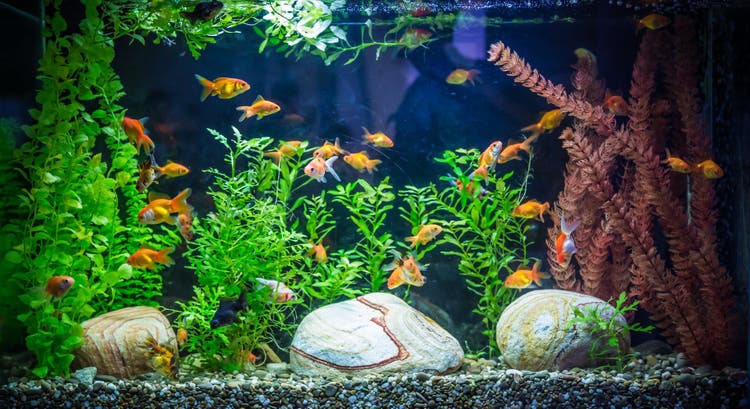
How to Feed Newly Hatched Fish (Fry)
The main concern in feeding newly hatched fish (called “fry”) is finding food small enough for these tiny fish to get their mouths around. This demands some work on your part, but since young fish grow quickly, within a few weeks they’ll be able to eat whatever you’re feeding your other fish.
Livebearers
Feeding the young of livebearers, fish that give birth to live young, is a relatively simple matter. These fish include guppies, mollies, and swordtails. By the time these fish are released from the body of the mother they are usually large enough to feed on pulverized flake food. Use a mortar and pestle to crush the food into a very fine powder. Sprinkle a pinch of this powder into the fry tank. This may not seem like a lot, but with fry, even more than with adults, frequent small feedings are best. Try feeding this pinch of food several times a day. If the tank begins to get cloudy, make a water change and cut back on the amount of food.
While this diet may be sufficient, a variety of foods will provide more protein. Live brine shrimp make a good addition to their diet. And prepared foods for livebearer fry may be purchased from the pet store.
As the fish grow, increase the size of the crushed flake and decrease the frequency of feedings. Some young will grow faster than others and the larger ones may begin to prey on the smaller ones. Transfer the larger fish to a grow-out tank where you can feed them larger flakes of food until they are ready to join the fish in the community tank.
Egglayers
Most fish are egglayers, including barbs, cichlids and gouramis. As the eggs begin to hatch, remove the fry to a tank of their own. These fish will need the smallest food you can give them and the first food of choice are microscopic, single-celled organisms called protozoans. While each of these animals is too small to be seen with the naked eye, hundreds of thousands of them swimming in water will make it cloudy. This swimming mass of protozoa is called infusoria.
Cultures of infusoria can be bought at some pet stores that specialize in aquarium fish. But it is a fairly simple matter to make your own. Since all but the most sterile water contains some protozoa, what you need to do is culture them in the quantity needed to feed your fish.
Take a clean gallon jar and fill it about 75 percent full of chlorine-free water. Put a few rotting lettuce leaves into the water and let it stand for a day uncovered. Then cover it and allow the jar to sit for several days. (Because the infusoria takes several days to culture, make sure you begin before the fry are born.) By that time the water should have a cloud of infusoria in it.
To feed your fish, take up some of the water with a turkey baster or eye-dropper and drip the infusoria into your fry tank. Begin with a few drops and feed several times a day. If you see your fry tank becoming cloudy, make a water change and cut back on the number of feedings. The infusoria will last for several days, long enough to allow your fry to develop to the point that they will be able to begin feeding on larger food.
After a week or so, you can begin feeding the fry live brine shrimp or microworms.
Microworms are colorless threadlike worms called nematodes (“nema” means thread). These must also be cultured. Starter cultures can be purchased at aquarium shops or from laboratories listed in aquarium magazines. To raise the culture, put a 1/4 to 1/2 inch layer of oatmeal, soaked with water so it forms a paste, in a small container – a small yogurt container will do – and add the small culture of worms.
Put some tiny pinholes in the top of the container, enough to let some air in but not enough to allow the culture to dry up, and cover. In a few days you will have a growing culture of worms. To feed these to your fish, take a pinch of them up and drop them in the tank, or use a tweezers to grab them. They will fall in a bundle to the bottom of the tank where you can watch your fish feed on them. Once again, drop in only as much as they will eat within a couple of minutes. Feed this a few times a day.
The culture will last a couple of weeks, by which time your fish should be large enough to begin feeding on crushed flakes or on prepared fish flakes for fry. After a couple of weeks the culture will become pretty rancid smelling so you’ll probably want to discard it. If you are expecting some new births, allow some of the culture to dry out. The worms will survive for some weeks in this state and will serve as a starter culture for your next batch of worms.
Once again, as these fish grow, remove the largest ones to a separate tank so they’re not competing with their small siblings.